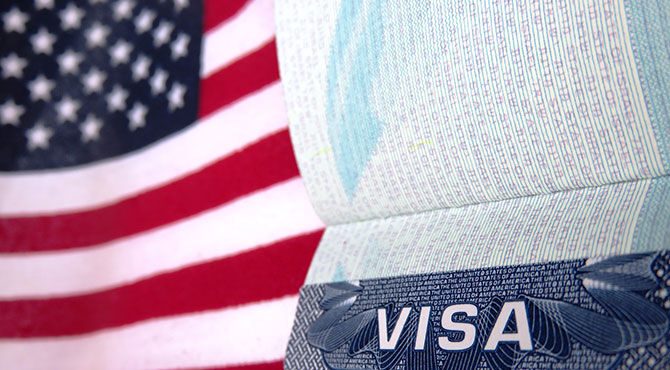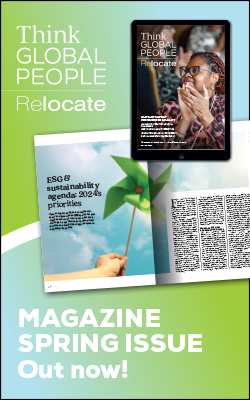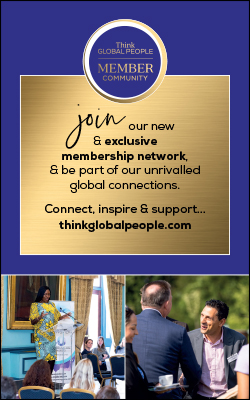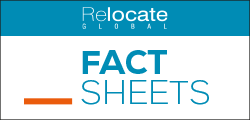Envoy Global: How to prepare for the next H-1B visa lottery
How do you prepare for the H-1B visa lottery? Following the high demand for the visa in the US, good preparation will play an vital role when making an application for the fiscal year 2019.

Huge numbers of H-1B visa applications
The sheer volume of applications has overwhelmed the H-1B visa lottery for a few years now, but the 85,000 cap has held steady.In contrast to the previous year’s 236,000 petitions filed, FY 2018 was a sharp downturn. In fact, last April’s lottery season saw the lowest application rate since 2014. It’s impossible to know how many H-1B applications will be filed this coming April for FY 2019. But, with acceptance rates below 42 percent for the past four years running, it’s safe to assume competition is still fierce.The government’s trend toward higher scrutiny, however, makes compliance all the more critical during the application process and throughout the duration of the visa period of stay.Related stories:
- Envoy Global: Business immigration compliance under the microscope
- The bigger picture in the USA: mobility professionals reflect
- US federal courts block majority of latest travel ban ruling
H-1B visa under the microscope
Thanks to a series of memos and an executive orders implemented in 2017, the H-1B visa now faces increased scrutiny and stricter enforcement.Site visits are on the rise, and USCIS published all the names of businesses as well as the number of approved H-1B visas in one easily-accessible document back in July. With all this heat on the H-1B visa, other visa categories are gaining interest – such as the J-1, E, L, TN and others.It’s no surprise that companies and petitioners are looking at alternative options. It might also mean that fewer foreign nationals are opting to work in the US, a prospect that could enhance the already-worrying labour shortage in America.Policy changes are tougher on immigration
Back in March, the current administration issued a memo that directed immigration enforcement agencies to take a more scrupulous approach to adjudication. Another memo that month separated computer programming from the H-1B categorization of “specialty occupation.” And in April, President Trump signed an executive order titled, “Buy American, Hire American,” which called for adjudicators to take a closer look at practices in companies hiring foreign workers under the H-1B visa program. The H-1B has been the target of more than one attempt by the administration to tighten its grip on immigration.In April, USCIS issued a memo declaring its intention to take a more “targeted approach” when it comes to site visits. The target? Companies with multiple H-1B-sponsored employees. Premium Processing for the H-1B visa is another area that’s seen some major changes in the past year. On April 3, 2017, USCIS stopped Premium Processing for all H-1B applications for six months. Why? To help alleviate some of the backlog for regularly processed H-1B cases, so adjudicators could examine each case more closely.Slowly, Premium Processing has been added back for specific petitions. On June 26, Premium Processing was allowed for petitions for medical doctors. On July 24, other cap-exempt petitions were added back to the Premium Processing list, which included petitioners sponsored by universities, nonprofits and others. Only on October 3 did USCIS resume Premium Processing for all H-1B petitions, including visa extensions. It’s unclear whether there will be any Premium Processing changes for the coming year, but this last year exemplified a high level of officer scrutiny. It’s a good reminder for HR departments to ensure policies are in place that will help their companies’ remain in compliance.More proof that the US government’s attention has turned to the H-1B is the unusually high number of Requests for Evidence (RFE) notices that have been issued in H-1B cases this year. Roughly 85,000 H-1B-related Requests for Evidence were issued from January 1 to August 31, 2017 by USCIS – a year-over-year increase of 45 percent. In contrast, the number of H-1B petitions awarded increased by only three percent over the same period, meaning that although USCIS is imposing a tougher review, officers are still adhering to the laws related to the H-1B program as created by Congress.Officers are approving applications that meet the requirements of the H-1B program at approximately the same rate of approval as before the increase in RFEs, which should bring some peace of mind to compliant employers.How can I prepare for H-1B visa lottery?
Every shift in regulations, processing or policy could impact your organisation. In order to get ready for the H-1B visa lottery, it’s absolutely imperative to get started early.From a purely tactical perspective, starting early helps you identify problems with petitions, job descriptions and other elements of the H-1B process as they arise – and it decreases your chances of missing a key piece of your application. The last thing you want is to find errors days before you need to turn in your petitions. The first step to starting your H-1B immigration application process is to notify your attorney by January, or as soon as possible. Make sure everyone is aware that H-1B visa petitions – and everything that goes along with that – will require attention and action. By February, you should make sure you have all your required documentation together and that it’s well-organised and easily accessible. At this point, you can start to review visa expiration dates for all your current foreign national employees and prospective hires, which is important for those with short-term immigration status such as F-1 student employees on OPT status. This is when you’ll want to start the conversation with your foreign national employees or prospective employees. Have your attorney review their H-1B eligibility or determine whether some qualify for visa classifications other than H-1B.It’s a good idea to draft your job descriptions early, too. By February, you should also have those descriptions, including key job requirements. The accuracy and details of the job descriptions are important from a compliance perspective, since this is what USCIS uses to make sure the H-1B applicant meets the H-1B program’s legal requirements. As you enter March, you’ll want to gather all necessary documentation that demonstrates the legitimacy of your company and that is it is currently engaged in active business. USCIS will need this in order to allow your company to sponsor a foreign national for employment. You’ll also need this info to file your Labour Conditions Application (LCA) with the government before the H-1B petition is filed. The LCA helps you determine prevailing wages. You might be required to provide more information about your company later in the process, so use this time to collect any documentation such as dated website print outs, payroll information, invoices/purchase orders/contracts that show business is ongoing, etc.The H-1B visa lottery typically opens on April 1; however, because April 1 falls on a Sunday in 2018, it’s important to check the USCIS website regularly for updates to confirm the actual open date.To avoid rushing this H-1B cap season, or worse – making mistakes that could cost you acceptance – start early. Yes, the visa cap for H-1B is still a few months away, but with all the details that go into the process, all the policy changes we’ve seen so far this year, and all the heightened scrutiny, it’s best to jump on it sooner rather than miss the boat. This article was prepared by Envoy Global the global immigration services provider. For further information on US immigration, permits and visas visit https://www.envoyglobal.com/.Interested in learning more? Read Envoy’s Compliance Guide for the latest in immigration best practices.For related news and features, visit our Immigration section.Relocate’s new Global Mobility Toolkit provides free information, practical advice and support for HR, global mobility managers and global teams operating overseas. Access hundreds of global services and suppliers in our Online Directory
Access hundreds of global services and suppliers in our Online Directory
©2024 Re:locate magazine, published by Profile Locations, Spray Hill, Hastings Road, Lamberhurst, Kent TN3 8JB. All rights reserved. This publication (or any part thereof) may not be reproduced in any form without the prior written permission of Profile Locations. Profile Locations accepts no liability for the accuracy of the contents or any opinions expressed herein.




























